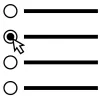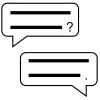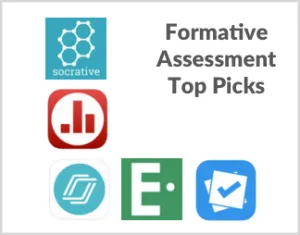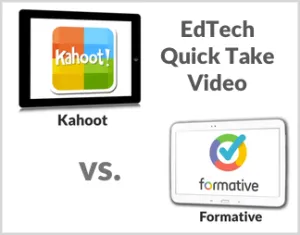Great formative assessment apps and how to use them effectively.
Popular formative assessment apps such as Kahoot, Quizizz, and Plickers are practically synonymous with online quizzes and polls. It’s true: These student-response tools make giving and scoring quizzes easy and efficient. And they give us great feedback on students’ learning, which can help inform instruction.
But that’s just the tip of the iceberg.
To unlock formative assessment’s full potential, go beyond the bar chart and get students to reflect on their own learning goals, areas for growth, and next steps. Thankfully, the digital tools you're already using often have features to support this.
Two Teaching Strategies to Try Tomorrow
When your students see their quiz scores, do they move on rather than reflect on their learning? Try this fix: Run a simple poll or short-answer quiz after a quiz to focus students on self-assessment rather than scores. Here are a few suggested (and remixable) questions and prompts.

Follow Up a Quiz with This Poll
- Now that the quiz is over, how confident are you feeling about your understanding of X?
- How hard was the quiz?
- How prepared did you feel?
- How honest are you being with yourself about this?
Image
 ... Or This Short-Answer Quiz
... Or This Short-Answer Quiz

- What do you know now about the content that you didn’t know before the quiz?
- What do you know now about yourself that you didn’t know before the quiz?
- How can the class address our remaining misconceptions?
- What are some specific questions you still have about the content?
Our Favorite Ways to Use Some Popular Apps

Formative
Give real-time feedback by asking students to post their thesis statements or guiding questions during brainstorming for an essay or project.

PlayPosit
Use the “reflective pause” feature to help students focus on important parts of videos and to fuel classroom discussion.
Kahoot
Use the discussion feature after a multiple-choice quiz; ask students to share any lingering questions, and then use these questions to plan future activities and lessons.
EDpuzzle
Use the “Link” feature as you embed questions in a video; as the video ends, direct students to a variety of other resources, which could include an online poll, a discussion forum, or even a creation platform.
Find the Perfect Formative-Assessment Tool
Check out our Top Picks list featuring the top-rated tools on Common Sense Education and our EdTech Quick Take comparing Kahoot and Formative.


Dig Deeper into Formative Assessment
Looking for even more resources, advice, and best practices? Our EdTech Tips page on formative assessment has just about everything you'll need!
Spread the Word
Feel free to share these posters and infographics with your colleagues and networks.

Poster: The Road to Student-Driven Formative Assessment
Get your students on the right path.

Poster: Reaching the Formative Assessment Summit
Good formative assessment answers three questions: Where am I? Where am I headed? How do I get there?









